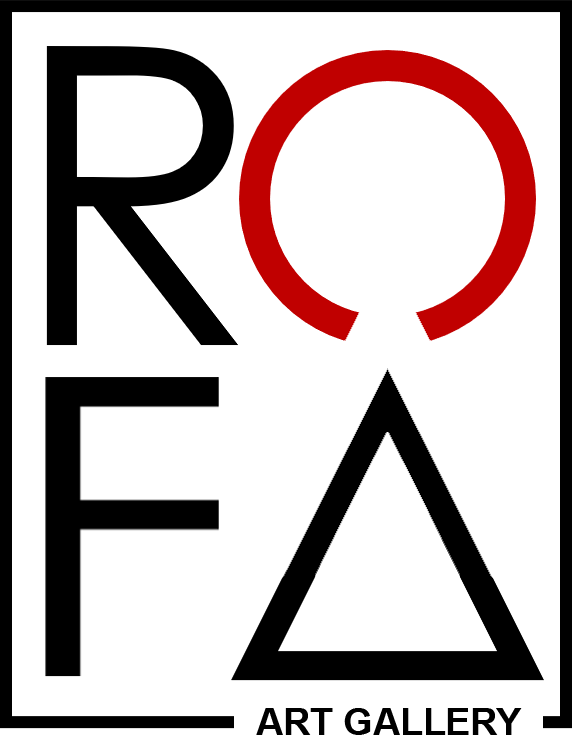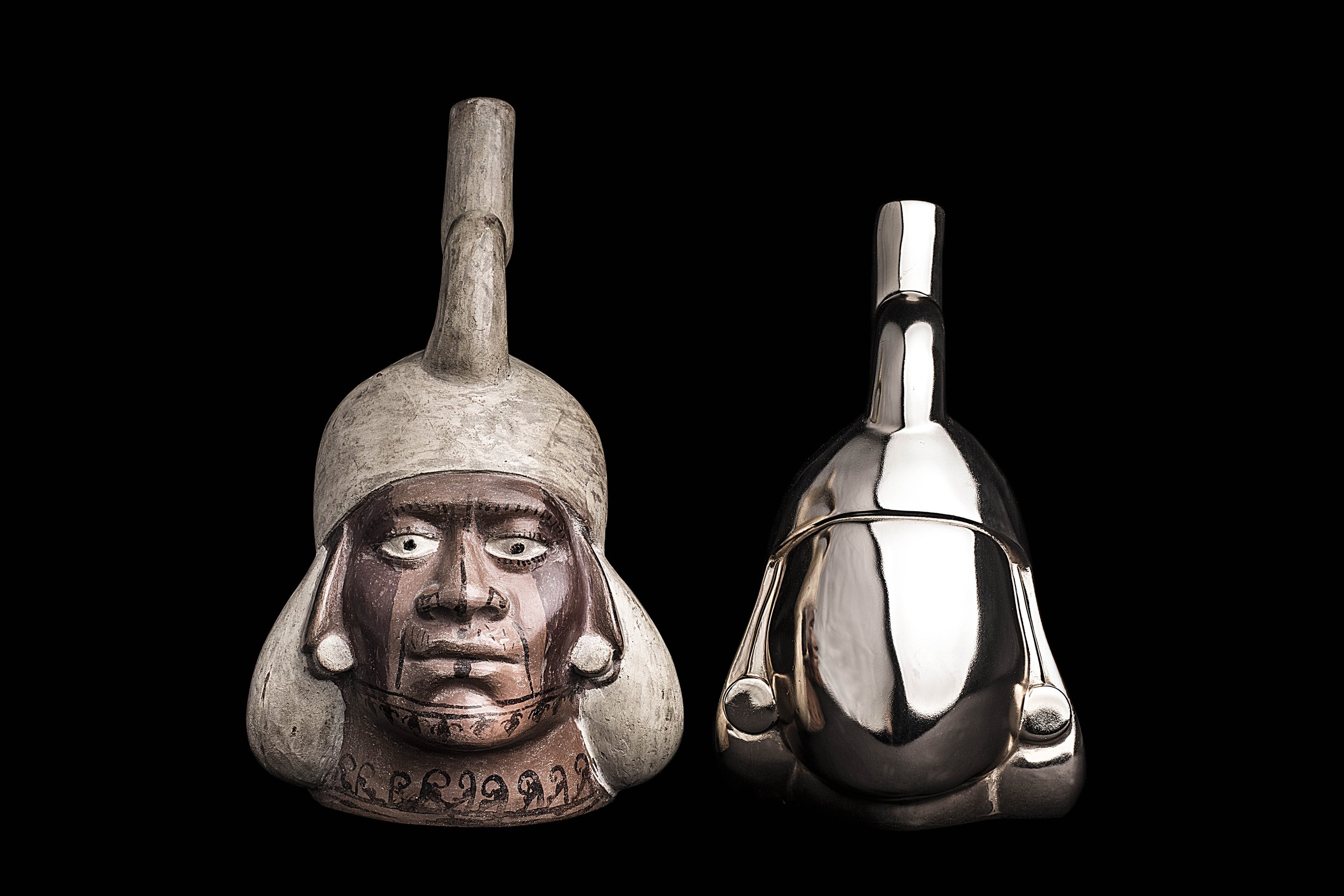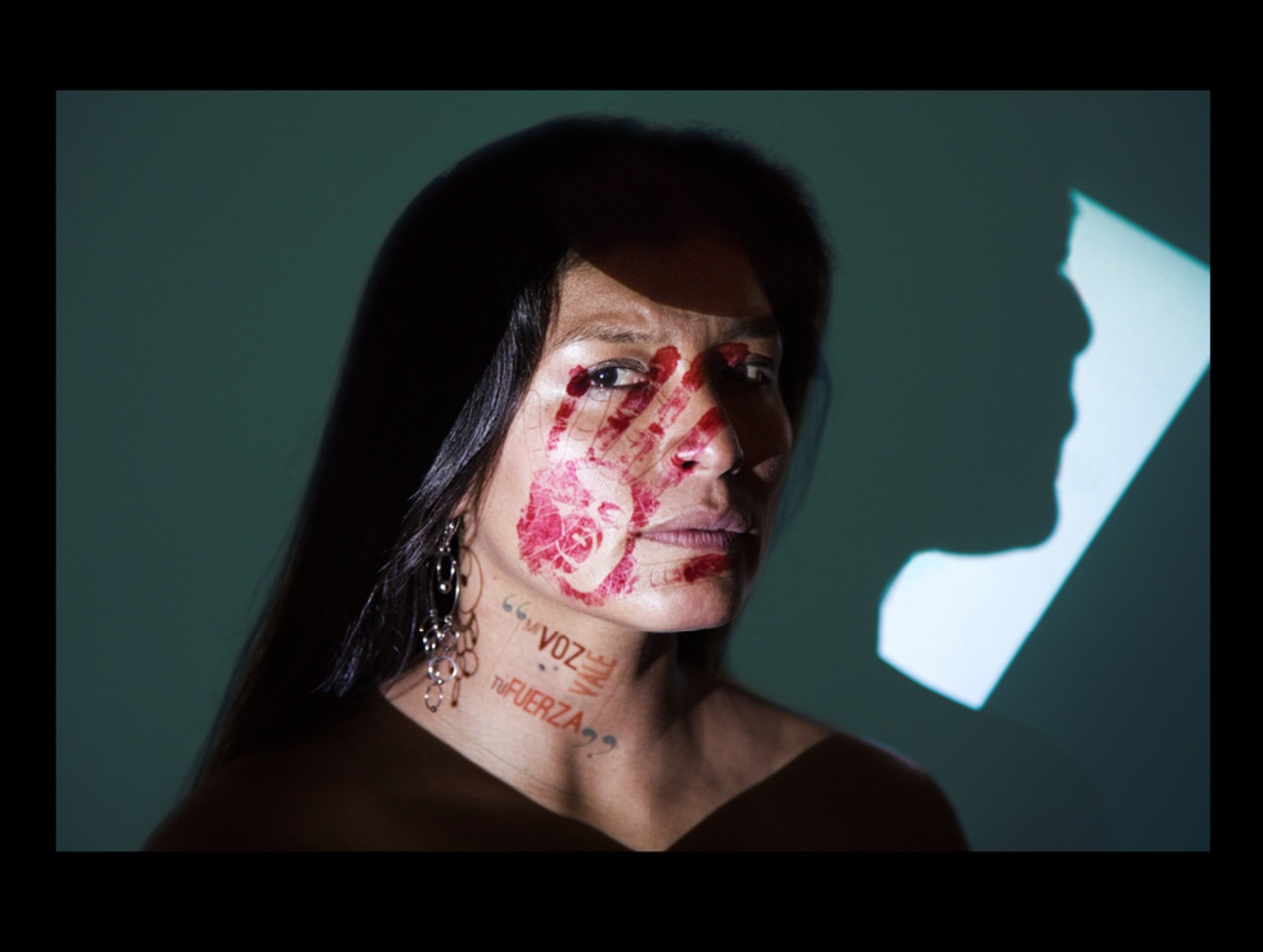Ana De Orbegoso
September 14th - December 1st, 2023 at the Embassy of Peru in Washington DC So what do we do with our history?
Neo Huacos
So what do we do with our history? Humanity needs its historical memory and its artifacts help us keep it alive. The role of art in this learning journey is constantly present in the work of Ana De Orbegoso. What do we do with all the representations that we do not have present? What do we do with what we should have learned from our history? How important is collective memory for the development of a country's identity?
The Neo-Huacos look at us and urge our commitment to keep history alive. De Orbegoso gives these hollow portraits of the Moche culture of Peru a contemporary feel. The huacos were originally in the Huacas built, in this case by the Moche, who among others created the Huaca del Sol and the Huaca de la Luna, the capital archaeological site of the Mochica culture. The artifacts contained in them are the Huacos. These ancient artifacts are heritage and witness to historical events.
Ana brings them to the present and makes us part of their forceful presence. She fills them with materials, colors and even textures and makes them: Neo-Huacos. She makes us part, places us face to face, huaco with huaco, confronts us and makes us ask ourselves: So, what do we do with our history? / ¿Y qué hacemos con nuestra historia?
A sortilege of transversal and inter-sectorial representations in these active Neo-Huacos, present and each time more current. They keep getting alive more sure that their function is to preserve ancient and contemporary history for future generations.
Gabriela Rosso
¿Y qué hacemos con nuestra historia? "How do we interact with our historical objects? How do we fit them into our daily lives? This project explores the different modalities of the portrait and analyzes its historical relevance. An artistic genre that responds to the natural aspiration of man to perpetuate his appearance, to transcend, either as a symbol of authority, family, social memory or identity sign. The deconstruction of the iconic image of the huaco mochica portrait (precedent of the representation of the human face in ancient Peru) and its subsequent reconstruction through references, generates new iconographies with their respective meanings and signifiers of the current Peruvian. Culture transcends through us, if remains static it disappears.
By appropriating the signs of history and adapting it to our daily lives we make it our own. It lives with us and, therefore, transcends and we transcend. “So what do we do with our History?” brings us closer to the reflection of the different functions that human representation has fulfilled - and keeps fulfilling - always closely linked to the concept of identity and collective-historical memory.
My sensorial landscape for the last decade has been informed, in great part, by Peruvian traditional cultural values and aesthetics. My intention is to create new iconography in order to bring Peruvian history into modern consciousness.
Ana De Orbegoso
Ana De Orbegoso
Ana De Orbegoso is an interdisciplinary visual artist and experimental video artist. Works between New York and Lima. Her artistic practice explores different aspects of identity through the use of popular iconography. Its objective is to confront the viewer with a mirror in order to awaken memory.
Feminist Projections In the last decade her artistic work, Ana, has made emphasis in rescuing the history and the individual and collective memory. In this specific proposal De Orbegoso puts the accent on the present. Her active political participation in issues related to women's rights makes her reflect on the effort that millions of women have been making to achieve gender equality and takes her approaches to non daily places. This daily performance makes her walk the streets taking photographs of marches and other images associated with women's empowerment. Then she travels around New York City and projects the images onto buildings, objects and human bodies. The works are the result of this interaction.
Power vest In a world where violence against women is a constant, this proposal reflects on the resistance and resilience that women have to use to confront adversity and emphasizes women as the key to the development of society. A power vest: a kind of shield with affirmations associated with what women live with every day. A statement, a banner that preaches about the daily struggle to achieve equal rights. Superheroines with the same goal. And the sorority that allows us to achieve it.
And what do we do with our history? How do we interact with our historical objects? How do we fit them into our contemporary life?
This project generates a journey through the different modalities adopted by the portrait and analyzes the historical relevance of it. Artistic genre that responds to the natural aspiration of man to perpetuate his appearance, to transcend, whether as a symbol of authority, family, social memory or identity sign.
The deconstruction of the iconic image of the huaco mochica portrait (precedent of the representation of the human face in the Inca civilization) and its subsequent reconstruction through references, generates new iconographies with their respective meanings and signifiers. By appropriating our history adapting it to our daily life, we make it our own, live with us and, therefore, transcend and transcend.
BIO. Ana De Orbegoso (Perú, 1964)
De Orbegoso has received a fellowship from the New York Foundations for the Arts in Photography and a grant from the National Association of Latino Arts & Culture in 2008; was selected for Descubrimientos PhotoEspaña07 / 09 and for the I Biennial of Lima, Peru; received the 1st Prize at the I National Photography Salon of the ICPNA 2006 in Lima, Peru and the Focus On New Works Award in New York in 2002. She was a finalist in the National Competition of Women Artists in USA of the Air Gallery in New York in 1993 and in The Best Photography Annual of the Photographer's Forum, (1993) among others.
Her work is in the collection of the National Museum of Women in the Arts in Washington DC; Fine Arts Museum of Houston; Art Museum of San Marcos, Lima; U. Lehigh, Pennsylvania; MALI Museum of Art of Lima; Institute of Photographic Art of Lima; ICPNA Instituto Peruano Norteamericano de Lima; Gorman Museum UC Davies, Bellarmine University, Violy McCausland Collection, Joaquim Paiv Collection - Museum of Modern Art of Rio, Art Institute of Chicago and Alejandro Castaño Collection, among others.
Her short film "La Última Princesa Inca" won Best Experimental Short Film at the 2015 Big Apple Film Festival and at the California Women's Film Festival 2016. He also received a special mention from the jury at the Extreme Film Festival of Veracruz "for recovering aesthetic and plastic a historical moment of Latin America ".
Her photographic work "Vírgenes Urbanas", a decolonization work inspired by paintings from the Cusqueña School, has been exhibited since 2006 around Peruvian territory, in an itinerant exhibition with interaction of local artists, having visited more than 33 towns and cities until the moment.
Between her individual samples they appear: Spectacle The Last Inca Princess in the huacas, Sanctuary of Pachacamac, Lima (2018); Urban Virgins, Inca Garcilaso Cultural Center, Ministry of Foreign Affairs, Lima (2018); Hymns / Anthems, Consulate of Peru in New York (2017); Show The Last Inca Princess in the huacas, Huaca Mateo Salado, Lima (2017); And what do we do with our History ?, CEDE Gallery, Lima (2017); The Last Inca Princess, Pedro de Osma Museum, Lima (2016); Arte Donde Vallas with the work Vírgenes Urbanas in 20 publicity panels around Metropolitan Lima (2015); Hymns, Embassy of Peru in Washington DC; Selected works in Crossing Arts NY (2013); Icarus, Bendheim Gallery, Greenwich Arts Council, Conn., USA; The Invisible Wall at the Instituto Cervantes New York (2011); Urban Virgins, Museum of the Nation, Peru (2009); You Are Here, Centro Cultural Ccori Huasi, Lima; Fotonoviembre07 Tenerife, Spain; UC Davis, Gorman Museum (2007); Photography Biennial of Lima (2007); U. of Bellarmine Louisville, Kentucky (2007); Bespoke Gallery, New York (2007); Inka Museum, Cusco, Peru (2006); Municipality of Miraflores, Lima, Peru (2005); Lucía de la Puente Gallery, Lima, Peru (2005); ICPNA Lima, Peru (2001).
Her group exhibitions include: Qulla Raymi Killa, Amano Museum, Lima (2018); L'Art Contemporain Péruvien / ComparArt, Fondation Taylor, Paris, France; 1st Photography Biennial of Cusco, Peru (2017); Peru.









































